Welcome
to
our
Annual
Report
Summary
Our vision
Liveable, Thriving and Connected Communities.
He noohanga aahuru, he iwi whai ora, he hapori tuuhono tahi.
Overview
Tirohanga Whaanui
Creating liveable, thriving and connected communities
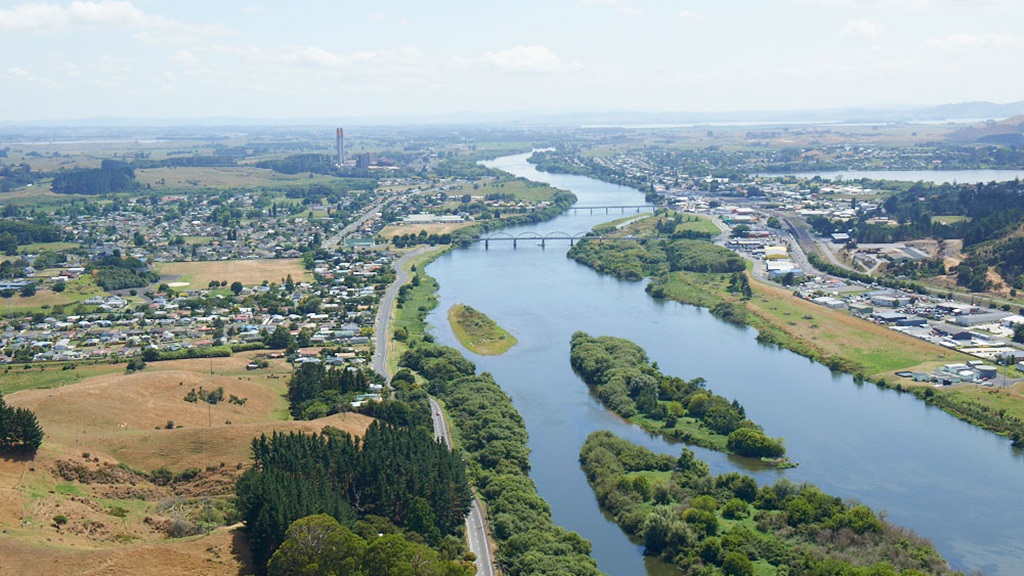
Creating liveable, thriving and connected communities
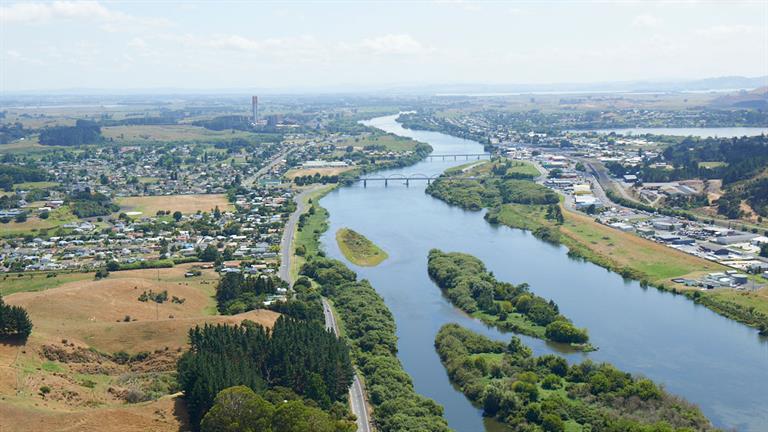
Our vision of ‘liveable, thriving and connected communities- he noohanga aahuru, he iwi whai ora, he hapori tuuhonotahi’, continues to guide how we shape our growth so we create communities that people feel connected to and want to live in.
People-friendly living
The Waikato District Blueprint and the 15 Local Area Blueprints, which were adopted in June 2019, entered their implementation phase in 2019/20. The Waikato District Blueprint helps give effect to our vision because it carries the voice of our community. It is a tool to move from vision to strategy, and from strategy to action, by setting out specific, prioritised initiatives at the district and local level. The District Blueprint identifies nine themes and related initiatives which will further help in giving effect to Council’s vision. In addition to the nine district-wide themes and related initiatives, 15 Local Area Blueprints were developed. In the past year, Council began implementing the Blueprint by progressing some of the initiatives for which funding and staff resourcing was already available. It also began discussing and planning implementation of other initiatives with potential partner agencies and community groups. A full stocktake of progress against all initiatives was completed in June as part of monitoring how the Blueprint is being put into action. The Blueprint initiatives identified and prioritised by the community will also help with the development on the 2021-2031 Long Term Plan.
Sustainable development
Our Resource Consents team handled 1,046 resource consent and related applications this year. While this is down from last year,3,774 enquiries were handled by our Duty Planners. Because of the popularity of our Duty Planning service, we are now providing this service at our Tuakau office once a week, for our northern customers. Our pre-application requests are up 25% on last year too. The number of consents we are processing reflects the continued development growth across the district, particularly for subdivision development, as well as our work towards achieving Council’s vision.
Economic Development
The complete impact of Covid-19 on our district is still largely unknown
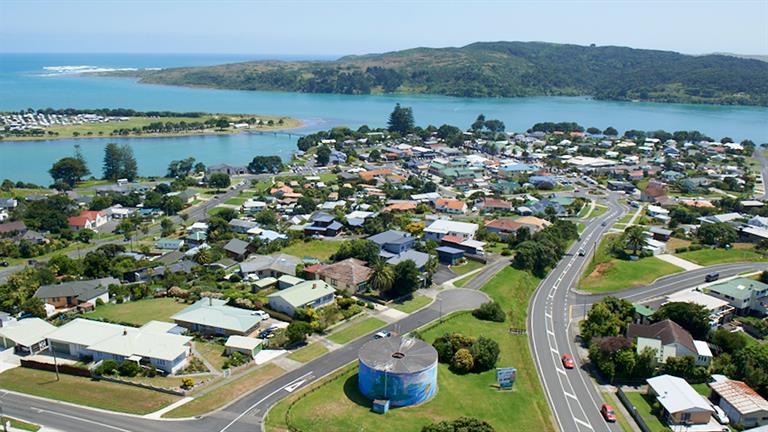
Economic Development
The complete impact of Covid-19 on our district is still largely unknown

However, the Waikato 2070 Economic and Growth Strategy, which was adopted by Council in June 2020, has generated a work programme that not only focusses on continued growth for our district, but also the ability to support business and community sustainability.
The growth indicated in Waikato 2070 has been informed by in-depth analysis and combines economic, community and environmental objectives to create liveable, thriving and connected communities. The growth direction within Waikato 2070 informs long-term planning and therefore affects social, cultural, economic and environmental wellbeing.
Waikato 2070 will also provide input into regional planning processes such as Future Proof and Hamilton to-Auckland Corridor planning. It is also currently informing the development of Asset Management Plans and associated capital works planning for the2021-2031 Long Term Plan.
Waikato 2070 was adopted in June following a period community consultation. We received over 90 submissions, with a number of submitters speaking at a
hearing.
Working together with our Communities
As a democratically elected Council, our goal is always to involve you in decisions that affect the future of our communities and our district.
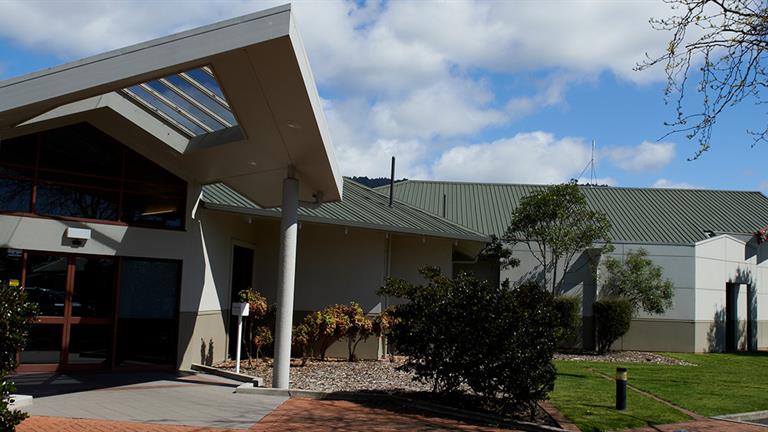
Working together with our Communities
As a democratically elected Council, our goal is always to involve you in decisions that affect the future of our communities and our district.

We've appointed two Maangai Maaori (‘Voice of Maaori’)representatives on our three principal Council committees in the past year. These representatives will bring their vast skills and experience, as well as a Te Ao Maaori lens, to the decisions that the Council committees make, which will benefit our decision-making process and our communities.
We opened many of the Councillor workshops to the public, providing transparency and connecting our communities with the early planning stages on key decisions and policies, including the upcoming Long Term Plan 2021-31.
Building Connected Communities
As a democratically elected Council, our goal is always to involve you in decisions that affect the future of our communities and our district.
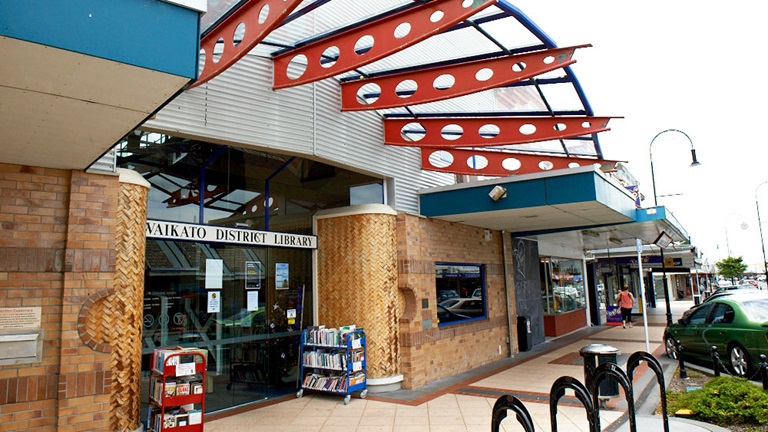
Building Connected Communities
As a democratically elected Council, our goal is always to involve you in decisions that affect the future of our communities and our district.

Our shared library services agreement with Hamilton City Council has benefitted over 3,000 of our residents. Waikato district residents accounted for 8% of Hamilton City borrowers and the number of members signing up was 14% higher than modelled. These results support the value of this relationship and the desire to work collaboratively with Hamilton City for many years to come.
Caring for our environment
Our aim is to provide sustainable, attractive, affordable and safe options for living, in a way that’s in tune with what our ratepayers want and need.
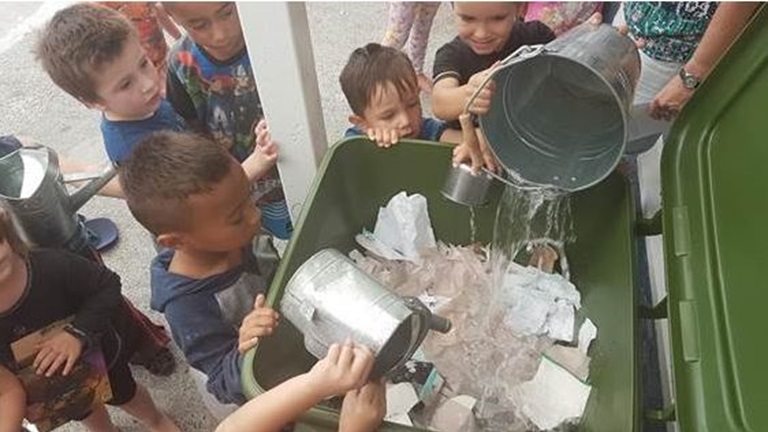
Caring for our environment
Our aim is to provide sustainable, attractive, affordable and safe options for living, in a way that’s in tune with what our ratepayers want and need.

Our district generates about 52,000 tonnes of waste that goes to landfill each year. This is an average of 750kgs per person! But we are also diverting about 71,000 tonnes of material from going to landfill through reuse, recycling and composting.
Under the Council’s Waste Management & Minimisation Plan (WMMP) 2018-2024, the vision of zero waste and resource recovery is integral to the health and wellbeing of our community. To achieve our vision of zero waste, we are continuing our work with Zero Waste Education, ParaKore, and Enviroschools programme.
During the Covid-19 Level 4 lockdown, the team at XtremeZero Waste delivered their lessons online, and a tutortook students on the journey of zero waste using a digital presentation.
Likewise the Para Kore, which aims to normalise zero waste by drawing on Te Ao Maaori (the maaori world) perspectives and the traditions and practices of our tupuna (ancestors),went online and trialled a number of live learning sessions that covered topics such as bokashi, making natural paints, and gardening and waste reduction for people living in urban areas. Each of these live learning sessions attracted two to nine thousand digital learners. Enviroschools programme empowers young people to plan, design and implement sustainability actions that are important to them. Connecting with their own communities, Enviroschools learners become actively involved in social, cultural and environmental change. At Maramarua School, students are revitalising the school’s gardens, Huntly West School are continuing to create a sustainable mara kai (vegetable garden) facility, and students at Pukekawa School have replanted many of their school’s gardens to increase biodiversity in the area.
Environmental Health
Our Environmental Health team has maintained its status as a recognised agency by the Ministry for Primary Industries (MPI) to provide verification services within the
district. Three Environmental Health Officers were appointed by the Ministry of Primary Industries (MPI) as verifiers of food operations during the year, and two staff also
progressed to Food Safety Officer status for enforcement activities.
Because of Covid-19, our Environmental Health team has work hard with food operators in the district to assist with adapting to our new environment and the additional safety
considerations that come with it.
Our natural Environment
In preparation for notifying Stage 2 of our Proposed District Plan in the 2020/21 year, we’ve identified land that is subject to coastal inundation, coastal erosion and flooding from the Waikato and Waipa rivers through a coastal hazards assessment. This assessment focusses mainly on Raglan and Port Waikato urban areas and flood modelling. The flood modelling and coastal hazard assessment incorporate the
effects of climate change over a 100 year period.
The Waikere walkway project on the eastern shore of Lake Waikere was completed early in the 19/20 financial year under budget and on time. The section of walkway completes a short walk to the edge of Lake Waikere and is completed with native plantings.
Council have also partnered with Waikato Regional Council to procure a regional and district emissions stock take. A climate action project was initiated, which will use the stock take to develop a climate resilience action plan and policy. The action plan includes mitigation and adaptation for both Council and the district, advancing Council’s commitment to climate leadership on behalf of its communities, while simultaneously
implementing operational initiatives.
Funding for Local Groups
We supported the work of 97 organisations and charities throughout the district this year with grants and donations from Council-owned or administered funds.
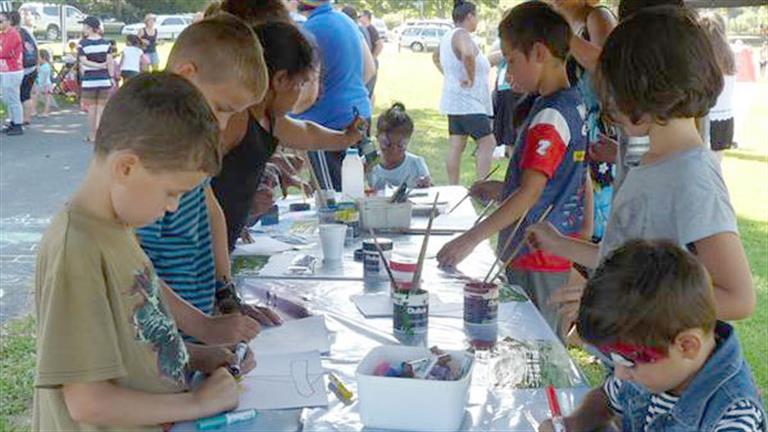
Funding for Local Groups
We supported the work of 97 organisations and charities throughout the district this year with grants and donations from Council-owned or administered funds.

On behalf of the Creative Communities Scheme Fund we distributed $58,581 to benefit 24 local groups, and the work of two more groups benefited from $28,000 we distributed
on behalf of an independent trust we administer, the Waikato District Community Wellbeing Trust
Learning to be 'DogSmart'
Our Animal Control team responded to 2,933 service requests over the last year with an average of 7 dedicated officers on the road at any one time for the Waikato district.
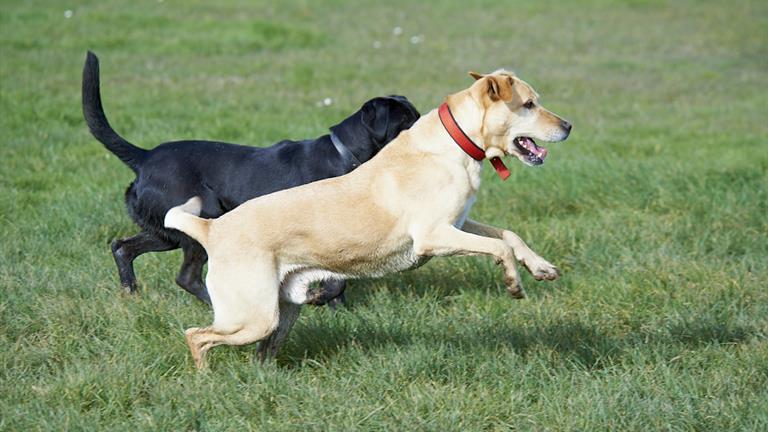
Learning to be 'DogSmart'
Our Animal Control team responded to 2,933 service requests over the last year with an average of 7 dedicated officers on the road at any one time for the Waikato district.

In addition to our ‘Dogs in Libraries’ programme and our school education visits, we were involved with two successful public events this year with the ‘Get Your Pups Out for Breast Cancer’ pink walk in Horotiu and Tuakau, and the ‘Safe Kids’ Halloween event in Huntly.
While Covid-19 meant we put a temporary stop to our community events, we look forward to engaging with our communities at our popular events like Pound Pups Pool Party and our annual Dirty Dog Challenge.
In June of 2020, 14,736 dogs known are known to be residing in the district. Of these dogs, 13,735 are registered.
Road and Footpath networks growing
We successfully completed several projects which supported Council’s liveable, thriving and connected communities vision.
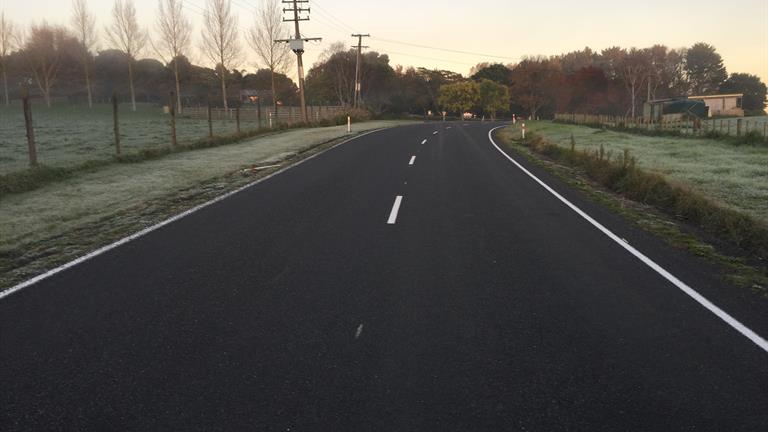
Road and Footpath networks growing
We successfully completed several projects which supported Council’s liveable, thriving and connected communities vision.

The new Mangawara Stream Bridge (and Watts Grove) upgrade at Taupiri provides a safe entranceway to the urupa. This bridge was a joint project involving Waikato Tainui, NZ Transport Agency Waka Kotahi, KiwiRail and Waikato District Council. The bridge was opened in June 2020.
Alternative Transport
We are supporting alternative transport modes and have started work to enhance shared walking and cycling paths in Raglan. These shared paths connect isolated parts of the community that rely on vehicle use with the town and popular beaches. During the Covid-19 lockdown, an increase in walking and cycling in the community was observed, and we hope to see this continue, along with a reduction in vehicle use. Local feedback of the completed sections on Wainui Road has been very positive. 2.8 kilometres of new footpath has been constructed which provides improved linkages and enhanced pedestrian safety across our communities.
Three Waters
On 1 October 2019, Council and Watercare Services Limited officially began their contract for the delivery of drinking water, wastewater, and stormwater services across the district.
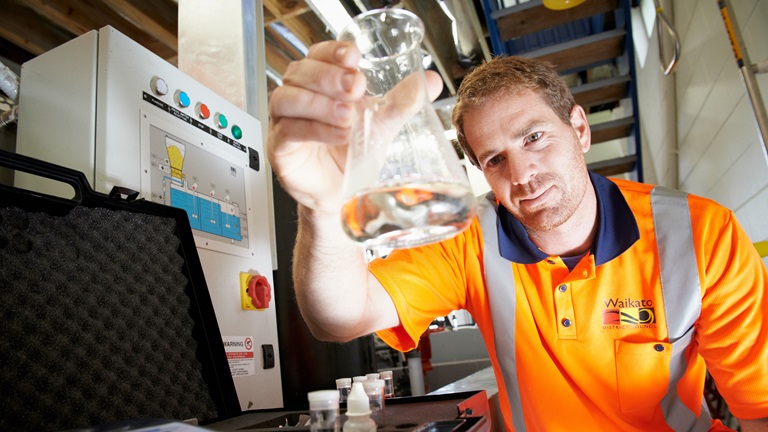
Three Waters
On 1 October 2019, Council and Watercare Services Limited officially began their contract for the delivery of drinking water, wastewater, and stormwater services across the district.

services, which includes capital works and bringing together local knowledge and industry expertise to the benefit of the district.
Water Supply
To ensure security of supply, a new watermain to link Huntly and Ngaruawahia was commissioned and constructed. This watermain will ensure both townships have sufficient supply into the future over peak water demand periods and will allow both the Ngaruawahia and Huntly treatment plants to be closed for essential maintenance during periods of low
demand. We also replaced 302 water meters that were over 20 years of age around the district. This work was completed in February 2020.
Waste Water
In 2019/20 we continued to mitigate the risk of wastewater overflows with a particular focus on protecting waterways and environmentally sensitive areas. We cleaned 18.76 kilometres of wastewater pipes across Waikato district and inspected them via Closed Circuit Television (CCTV) cameras, as part of the third phase of our ongoing wastewater pipeline inspection and cleaning project. We replaced a severely damaged manhole and 40 meters of degraded AC pipe in Huntly, we continued with an inflow and infiltration reduction programme in Meremere and Raglan to lower the high wet weather flows and established a programme of priority renewals and replacements for the district’s
Long Term Plan.
Stormwater
We oversaw development-led extensions of the stormwater network, stormwater treatment ponds and riparian planting beside streams in Pokeno to ensure that stormwater management keeps up with growth in the area. The Pokeno stormwater model has been updated in flood prone locations to help us better understand the impacts of urban development and climate change in the area. Because significant industrial and residential development h as been proposed on the Hamilton City side of the Te Rapa catchment area, Watercare have recently completed flood hazard modelling of the Waikato District Council portion of the catchment in Horotiu.
We also continued our work in Raglan, upgrading the stormwater network to mitigate flooding issues and improvement catchment management.
This is Waikato District
We provide...
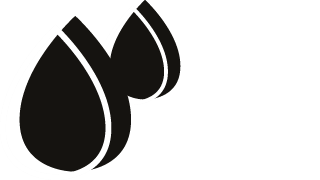
7,821,038 litres of drinking water a day

53 public toilets used by 4,000 people everyday
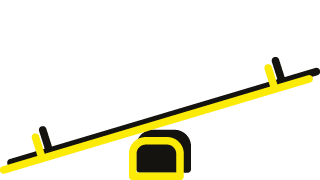
55 playgrounds and neighbourhood reserves
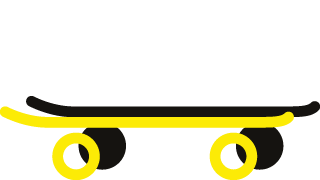
13 skateparks
3 swimming pools
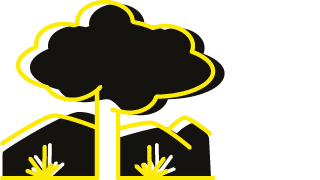
2 campgrounds- Papahua and Hakanoa
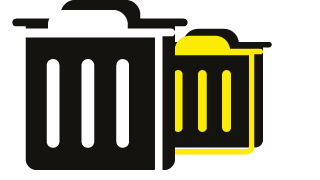
Kerbside collections of 10,438 tonnes of refuse each year
We Operate...
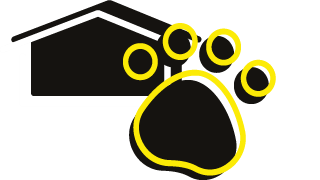
2 animal shelters

6 libraries that service 16,234 members
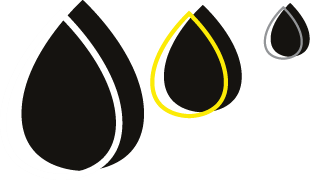
29 water reservoirs with a total capacity of 30,867m3

25 dog exercise areas

21 cemeteries
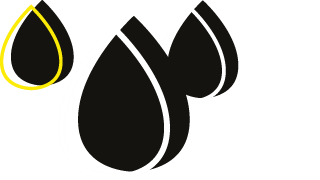
7 water treatment plants with a total capacity of 18,456m3 per day
Waikato Spans...
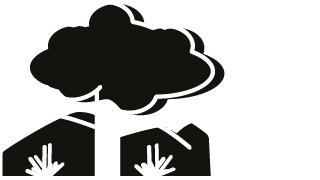
450,000 hectares of land
In 2019/20 we have supported...

152 community groups
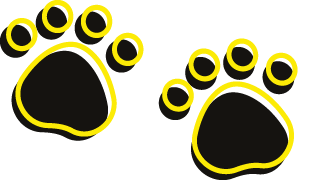
201 dogs were re-homed
We maintain...
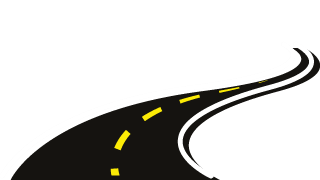
1,877 km of sealed roads
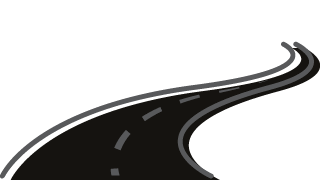
600 km of unsealed roads

113 parks and reserves
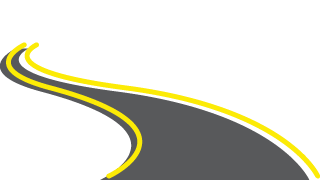
251km of footpaths
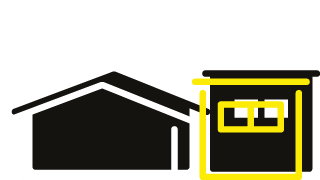
38 community halls
Waikato is home to...

75,618 people (26.4% identify as Maaori)
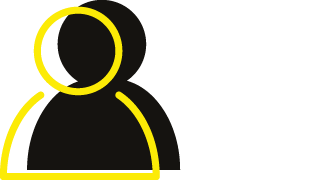
108 new citizens

14,736 dogs
In the past 12 months we have…
Supported our vision of building ‘liveable, thriving and connected communities’ by creating and adopting our Libraries Strategy, and ‘Waikato 2070’, our Economic Development and Growth Strategy
Successfully completed verifying and registering all food operators in the Waikato district under new Food Act 2014 guidelines
Appointed 2 Maangai Maaori representatives to our 3 principle Council committees
Diverted from landfill around 71,000 tonnes of material through reuse, recycling and composting
Through our Civil Defence team, we provided welfare support to our community during the Covid-19 national response, which was led by the Ministry of Health
Handled 3,501 duty planning inquiries through our pre-application services.
Added 10 hectares of parkland to the existing portfolio of 1,669 hectares we already maintain
What you got for $1
We deliver a broad range of services to our diverse district of residents, business owners and visitors. Here’s how we spent every $1 we received from general rates.*
Roading
Corporate and Council Leadership
Resource Management
Area offices and other properties
Parks and Reserves
Libraries
Grants and Donations
Animal Control
Environmental Health
Solid Waste
Waste Water
Community and Safety
Water Supply
How we did
Our projects and work programmes range across eight groups of activities. For each group of activities we have performance measures that provide us with targets to meet, such as responsiveness, safety, timeliness, meeting statutory requirements and compliance. This graph summarises how we did, where we met expectations and where we need to improve. Please see the full Annual Report on the Waikato District Council website to find out more about the targets and how we performed against them. See the colour coding system below to indicate how well we’ve done.
Performance target results
Governance
We’ve met four of our seven targets for how we make decisions, how we conduct our meetings, and how we consult with our iwi partners. We facilitated local authority elections this year and are pleased to have seen an increase in voter turnout compared to the last two elections. We are proud that we were able to continue holding online/virtual public meetings during the Covid-19 lockdown so that the community were able to engage in the decision making process from their own homes. We are advocating for permanent legislation changes, through the local government sector, so that virtual/online meetings can continue. This will further strengthen our accountability and transparency to the district’s residents and ratepayers.
Governance
Sustainable Communities
We have once again achieved 100% on all three of our Emergency Management targets this year, and have successfully registered all food operators in our district. We have a new engagement platform that will be launched in the new year and that we hope will have a positive impact on our customer engagement measures. Covid-19 meant we postponed the last of our 4 funding rounds, which was deferred to August 2020. We engaged with or consulted our communities on subjects ranging from speed limit changes, cemeteries, community halls, reserve management plans, and Blueprints to District and strategic plans.
Customer and Partnership focus
Economic development
Emergency Management
Grants and Donations
Parks and Facilities
Sustainable Environment
Council has surpassed our target and achieved a score of 66% against a target of 55% for the percentage of schools in the district where students receive solid waste education. While we were on track to meet our solid waste target for resolution of service requests, our result of 89% against a target of 95% reflects an administrative error during the October-December 2019 period. We are currently processing 99.84% of our standard building consents within the 20-day statutory timeframes, that means for this year of the 1,889 building consents we granted, 3 were not processed within the timeframe.
Animal Control
Building quality
Environmental Health
Strategic and District Planning
Solid Waste
Roading
The Waikato District Alliance has met 5 of its 6 targets this year. We were on track to meet all of our targets, but were unable to complete all of the sealed local road network resurfacing that we had planned due to COVID-19.
Roading
Water Services
We have met all our targets for our wastewater services this year – we attribute this to our ongoing programme of network improvement across the district. We have not met one of our Water Supply targets (for the percentage of real water loss from Council’s system) or one of our Stormwater targets (1 abatement notice was received for Raglan urban area).
Stormwater
Wastewater
Water Supply
Financial Statements
Statement of Comprehensive Revenue and Expense
| For the year ended 30 June 2020 |
Council | Group | |||
|---|---|---|---|---|---|
| 2019/2020 Actual $,000 |
2019/2020 Budget $,000 |
2018/2019 Actual $,000 |
2019/2020 Actual $,000 |
2018/2019 Actual $,000 |
|
| Total revenue | 175,219 | 176,151 | 146,493 | 146,493 | 147,011 |
| Finance costs | (4,570) | (4,195) | (4,316) | (4,570) | (4,316) |
| Operating expenditure excluding finance costs | (141,026) | (126,360) | (151,540) | (141,083) | (151,830) |
| Surplus (deficit) before tax | 29,623 | 45,596 | (9,363) | 29,889 | (9,135) |
| Income tax expense | - | - | - | - | - |
| Surplus (deficit) after tax wholly attributable to Waikato District Council | 29,623 | 45,596 | (9,363) | 29,889 | (9,135) |
| Other comprehensive revenue and expense | |||||
| Gain (loss) on property revaluations | (128,907) | 45,488 | 27,218 | (128,907) | 27,218 |
| Revaluation reserve – landfill | - | - | 616 | - | 616 |
| Gain (loss) on cessation of joint venture | - | - | - | (17) | - |
| Financial assets at fair value through other comprehensive revenue and expense | 1,540 | - | 1,913 | 1,540 | 1,913 |
| Total other comprehensive revenue and expense | (127,367) | 45,488 | 29,747 | (127,384) | 29,747 |
| Total comprehensive revenue and expense wholly attributable to Waikato District Council | (97,744) | 91,084 | 20,384 | (97,495) | 20,612 |
Statement of Financial Position
| As at 30 June 2020 |
Council | Group | |||
|---|---|---|---|---|---|
| 2019/2020 Actual $,000 |
2019/2020 Budget $,000 |
2018/2019 Actual $,000 |
2019/2020 Actual $,000 |
2018/2019 Actual $,000 |
|
| Current assets | 49,373 | 12,321 | 26,082 | 53,671 | 31,267 |
| Non-current assets | 1,763,361 | 2,029,192 | 1,853,798 | 1,762,661 | 1,853,098 |
| Total assets | 1,812,734 | 2,041,513 | 1,879,880 | 1,816,332 | 1,884,365 |
| Current liabilities | 44,145 | 38,739 | 26,264 | 43,113 | 26,369 |
| Non-current liabilities | 104,748 | 128,016 | 92,031 | 104,748 | 92,031 |
| Total liabilities | 148,893 | 166,755 | 118,295 | 147,861 | 118,400 |
| Net assets | 1,663,841 | 1,874,758 | 1,761,585 | 1,668,471 | 1,765,965 |
| Total equity | 1,663,841 | 1,874,758 | 1,761,585 | 1,668,471 | 1,765,965 |
Statement of Changes in Net Assets/Equity
| For the year ended 30 June 2020 |
Council | Group | |||
|---|---|---|---|---|---|
| 2019/2020 Actual $,000 |
2019/2020 Budget $,000 |
2018/2019 Actual $,000 |
2019/2020 Actual $,000 |
2018/2019 Actual $,000 |
|
| Balance at start of year | |||||
| Accumulated funds including share of joint venture | 1,062,038 | 1,135,148 | 1,062,601 | 1,063,353 | 1,063,766 |
| Reserves | 699,547 | 648,526 | 678,600 | 702,612 | 681,587 |
| Balance at 1 July as previously reported | 1,761,585 | 1,783,674 | 1,741,201 | 1,765,965 | 1,745,353 |
| Total comprehensive revenue and expense for the year wholly attributable to Waikato District Council | (97,744) | 91,084 | 20,384 | (97,495) | 20,612 |
| Other equity movements | - | - | - | - | - |
| Balance at 30 June wholly attributable to Waikato District Council | 1,663,841 | 1,874,758 | 1,761,585 | 1,668,470 | 1,765,965 |
| Represented by equity at the end of the year | |||||
| Accumulated funds | 1,090,189 | 1,202,189 | 1,062,038 | 1,091,674 | 1,063,353 |
| Other reserves | 573,652 | 672,569 | 699,547 | 576,796 | 702,612 |
| Balance at 30 June wholly attributable to Waikato District Council | 1,663,841 | 1,874,758 | 1,761,585 | 1,668,470 | 1,765,965 |
Statement of Cash Flows
| For the year ended 30 June 2020 |
Council | Group | |||
|---|---|---|---|---|---|
| 2019/2020 Actual $,000 |
2019/2020 Budget $,000 |
2018/2019 Actual $,000 |
2019/2020 Actual $,000 |
2018/2019 Actual $,000 |
|
| Net cash from operating activities | 50,738 | 37,580 | 40,921 | 50,632 | 40,723 |
| Net cash from investing activities | (40,067) | (71,853) | (45,448) | (50,022) | (40,936) |
| Net cash from financing activities | 15,000 | 34.269 | - | 15,000 | - |
| Net (decrease) increase in cash and cash equivalents | 16,671 | (4) | (4,527) | 15,610 | (4,213) |
Summary accounting policies
The Group consists of the ultimate parent Waikato District Council (Council), its 100% owned subsidiary Strada Corporation Limited (Strada) and the Waikato District Community Wellbeing Trust. Strada was previously a 50% party to a Joint Venture Agreement, Waikato Quarries Limited. All the companies in which Council has an interest, directly or through Strada, are incorporated and domiciled in New Zealand.
The principal activity of Council is the provision of local infrastructure, local public services and the performance of regulatory functions to the community. Council does not
operate to make a financial return.
Council has designated itself and the Group as public benefit entities (PBE’s) for financial reporting purposes.
Council has designated itself and the Group as public benefit entities (PBE’s) for financial reporting purposes.
The full financial statements of Council and the Group have been prepared in accordance with Tier 1 PBE accounting standards, the LGA and the Local
Government (Financial Reporting and Prudence) Regulations 2014 (LG(FRP)R) which include the requirement to comply with generally accepted accounting practice in New Zealand (NZ GAAP). These summary financial statements have been prepared in
accordance with and comply with Tier 1 PBE accounting standards as they relate to summary financial statements. These summary financial statements comply with PBE-FRS 43 Summary financial statements.
The financial statements are presented in New Zealand dollars and all values are rounded to the nearest thousand
dollars ($000’s).
The summary financial statements of Council and the Group are for the year ended 30 June 2020. The full annual report and summary financial statements were authorised for issue by Council on 21 December 2020.
Summary additional disclosures
Contigencies
are uncalled capital contributions in Local Authority Shared Services Limited.
Council is a 35 per cent capital beneficiary of the WEL Energy Trust. The life of the Trust ends in 2073 unless terminated earlier if its purpose is completed. Given the uncertainty
surrounding the life of the Trust, Council is unable to accurately establish the appropriate value of the 35 per cent share.
Commitments
Events after balance date
In early August 2020 Government announced a plan for a Three Waters Stimulus and Reform Funding arrangement. Later that month, Council entered into a Memorandum of Understanding which commits to engage in the first stage of the programme and to work together with both central Government and neighbouring councils. Council subsequently submitted an application for funding of$11.34m for a package of projects. The outcome of that application is expected to be known at the end of October 2020.
In 2019 a disclosure was made which detailed an agreement between Council and Watercare Services Limited for the operation and maintenance of water, wastewater and
stormwater services. The contract came into effect on 1 October 2019.
For Strada, no material events are expected to occur subsequent to 30 June 2020 which affect the financial position at that date. (2019: none)
Adjustments to the comparative year financial statements
Explanation of major variances
Overall revenue was $0.9m greater than budgeted. Contribution revenue was $8.8m higher than budgeted from growth exceeding budgeted levels throughout the district.
Charges for wastewater services were $3.6m more than budget while general fees and charges were $3.4m less than budget.
Overall expenses were $13.1m greater than budget. Other operating costs were $19.3m more than budget, partly offset by savings in employee costs ($4.0m) and depreciation and amortisation expense ($2.6m).
The above movements resulted in a surplus of $31.6m at an operating level when compared to the budgeted surplus of $45.6m.
Total comprehensive revenue and expense was $174.7m below budget. Property revaluations resulted in a loss of $129.1m compared to the budgeted surplus of $45.5m. This loss results from a change in the valuation rate for one class of roading assets, partially offset by a change in the basis of valuation of Bridges. This is more fully explained in Note 15: Property, plant and equipment of the full Annual Report.
The statement of financial position shows a decrease in overall net assets of $210.8m compared to budget. The biggest variance was for property, plant and equipment which was lower than budget due to a change in the valuation rate for one class of roading assets, partially offset by a change in the basis of valuation of bridges
The cash flow statement highlights how the capital programme was below budget and borrowings increased during the year, resulting in cash balances being $26.6m higher than budget at the end of the year.
Effects of the Covid-19 Pandemic
On 11 March 2020, the World Health Organisation declared the outbreak of Covid-19 a pandemic and two weeks later the New Zealand Government declared a State of National Emergency. The country was in lockdown at Alert Level 4 from 26 March 2020 to 27 April 2020, and then remained in lockdown at Alert Level 3 until 13 May 2020. After 13 May 2020, the country moved back top level 2 and 1.
During Alert Levels 4 and 3. Most staff worked either remotely or on site (for essential services only). All non-urgent maintenance and capital works were suspended. After 13
May 2020 we resumed most of our operations. There was no significant impact for our essential services during the periods of Levels 4 and 3, and deferred maintenance and capital works programmes caused no disruptions to services later in the year.
We took the following actions to manage our financial position and in respect of specific sectors:
- Contingency actions included drawing down medium and long-term loans to cover any possible cash shortfall from low Rates, Water Usage and Development Contribution receipts. These receipts held up better than forecasted.
- We offered commercial lessees a three-month rent deferral based on the strict criteria that the lessee was not in arrears before the pandemic. In return we asked the lessees to make up the balance of any deferred rent over the duration of the remaining lease term. No lessee took up this offer.
- In respect of one lease with a force majeure clause, we actioned a 50 per cent rent reduction for the duration of the Level 4 and 3 lockdown (Raglan Harbour Board Reserve). This had a minimal impact on rental income and the Reserve balance.
- In March 2020 a Covid-19 related wage subsidy amounting to $143,155 was received by Raglan Holiday Park Papahua (RHPP). RHPP is a fully self-funding activity and as such the operation was eligible for the assistance. Between April and June 2020 $119,988.97 was paid out to employees leaving a balance of $23,166.23 at 30 June
2020. The balance is included in Trade payables above. Of that balance, a further $6,971.59 has been paid out in July; the remaining $16,194.64 is to be repaid to the
Ministry of Social Development.
We have considered the overall impacts on the Council caused either directly or indirectly by Covid-19. The impact on the overall results was not material due the District
being a territorial authority and much of the work unable to be performed over lockdown being caught up within the 2019/20 financial year.
Disclaimer
The summary cannot be expected to provide a complete understanding as provided by the full annual report of the financial and service performance, financial position and cash
flows of Waikato District Council.
The summary has been examined for consistency with the full annual report and was audited by Audit New Zealand on behalf of the Auditor General. The full annual report
and summary received an unmodified audit opinion on 21 December 2020.
The full annual report can be obtained from any of the Council’s offices or can be accessed online at www.waikatodc.govt.nz.
Independent auditor's report

Independent Auditor's Report
To the readers of Waikato District Council's annual report for the year ended
30 June 2020
The summary of the annual report was derived from the annual report of the Waikato District
Council and group (The District Council) for the year ended 30 June 2020.
The summary of the annual report comprises the following summary statements on pages 3 to 6 and 8 to 13:
- the summary statement of financial position as at 30 June 2020;
- the summaries of the statement of comprehensive revenue and expense, statement of changes in net assets/equity and statement of cash flows for the year ended 30 June 2020;
- the notes to the summary financial statements that include accounting policies and other explanatory information; and
- the non-financial summary.
Opinion
In our opinion:
- the summary of the annual report represents, fairly and consistently, the information regarding the major matters dealt with in the annual report; and
- the summary statements comply with PBE FRS 43: Summary Financial Statements.
Summary of the annual report
The summary of the annual report does not contain all the disclosures required by generally accepted accounting practice in New Zealand. Reading the summary of the annual report and the auditor’s report thereon, therefore, is not a substitute for reading the full annual report and the auditor’s report thereon.
The summary of the annual report does not reflect the effects of events that occurred
subsequent to the date of our auditor’s report on the full annual report.
The full annual report and our audit report thereon
We expressed an unmodified audit opinion on the information we audited in the full annual report for the year ended 30 June 2020 in our auditor’s report dated 21 December 2020.
Council’s responsibility for the summary of the annual report
The Council is responsible for preparing the summary of the annual report which includes preparing summary statements, in accordance with PBE FRS 43: Summary Financial Statements.
Auditor’s responsibility
Our responsibility is to express an opinion on whether the summary of the annual report represents, fairly and consistently, the information regarding the major matters dealt with in the full annual report and whether the summary statements comply with PBE FRS 43: Summary Financial Statements.
Our opinion on the summary of the annual report is based on our procedures, which were carried out in accordance with the Auditor-General’s Auditing Standards, which incorporate the Professional and Ethical Standards and the International Standards on Auditing (New Zealand) issued by the New Zealand Auditing and Assurance Standards Board.
As well as our audit of Waikato District Council and Group's annual financial statements and performance information, we have performed a limited assurance engagement related to the District Council's debenture trust deed and performed a review of selected procurements, probity review and ad-hoc support, which are compatible with those independence requirements. Other than these engagements, we have no relationship with or interests in the District Council or its subsidiaries and controlled entities.
Clarence Susan
Audit New Zealand
On behalf of the Auditor-General
Tauranga, New Zealand
